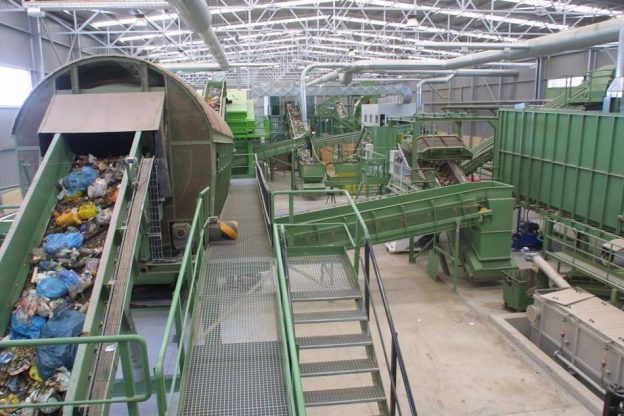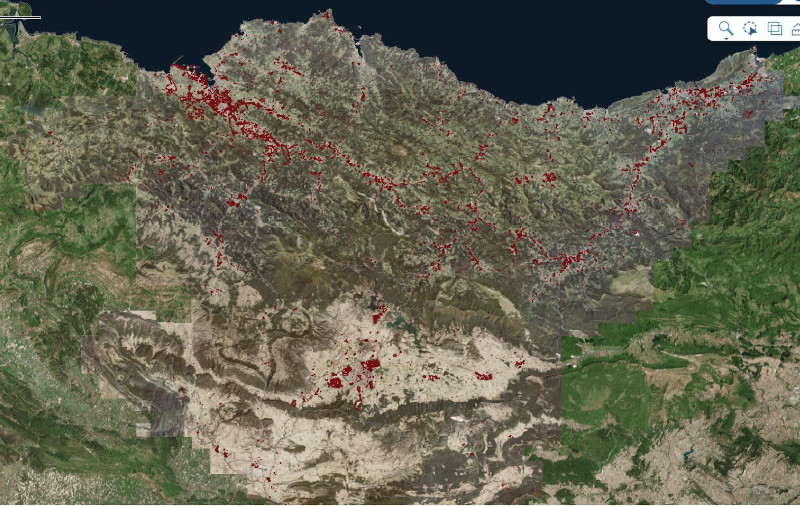Every citizen of Hego Euskal Herria generates 19 kilos of electronic waste a year
- The Salto has analyzed data from the 2020 The Global E-Waste Monitor report. That is why the countries of the European Union are the ones that generate the most electronic waste. In the Spanish state, 888 kilotonnes of electronic waste are generated each year, i.e. air conditioning appliances, appliances, computers, fluorescent and light bulbs or mobiles that we reject. Of these, 287, one third, were correctly recycled in 2017. Every person in Hego Euskal Herria generates an average of 19 kilos of waste a year.

According to the report, 53.6 megatons of this type (Mt) are produced worldwide each year. Since 2014, global e-waste generation has increased by 9.2 Mt and is expected to grow by 74.7 Mt by 2030. 78 countries in the world have specific legislation to deal with these wastes.
The amount each generates is totally unbalanced: Europe and Oceania are the continents that generate the most waste, with 16 kilos per head, followed by North America, Central America and South America, with 13.3 kg per inhabitant. In Asia and Africa, 5.6 and 2.5 kg per inhabitant were generated, respectively.
While in Europe 42% of waste is recycled correctly, in the rest of the world the level is less than 12%. 82.6% of the electronic waste generated in 2019 was not destined to an appropriate destination: 8% are spills or incinerated irregularly and approximately one in five devices performs a cross-border "trip" to treat irregularly as scrap or as second-hand items for repair and sale.
Every year 98 megatonnes equivalent to CO2 are poured into the atmosphere, as refrigerators, air conditioning and other household appliances are not recycled. They account for 0.3% of total energy-related emissions. The authors of the report have highlighted the cost of not recycling these elements and have accounted for 57 billion dollars in the raw material dissipated by the lack of actual recycling of these devices.
The report reveals that demand for iron, aluminium and copper for the production of new electronic products in 2019 stood at 39 megatonnes. "Even in an ideal scenario, iron, copper and aluminium (25 Mt) resulting from electronic waste are recycled, and the world would still need 14 Mt of iron, aluminium and copper to manufacture new electronic products."
Health problems
The health risks of their compounds particularly affect workers handling these devices, as well as children living near landfill sites. Hazardous elements include brominated retardant flames (BFR), chlorofluorocarbons (CFCs) or hydrochlorofluorocarbons (HCFCs). Every year, 71 kilotons of BFR and 50 kilotons of mercury are out of control, affecting community health.
Informal recycling of electronic waste has negative effects, such as fetal death, premature birth or reduced birth weight and length. According to the authors of the report, the informal recycling of electronic waste affects children: increased or decreased growth, changes in neuronal development, opposite learning and behavioural results, problems in immune system function and inability to perform lung function.
E-waste workers have also mentioned stress, headache, shortness of breath, breast pain, weakness and dizziness. Over the past decade, studies on the health of electronic scrap processors have shown the effects they may have on liver function, blood, male reproductive and genital disorders and sperm quality.
Lehengai anitzekin papera egitea dute urteroko erronka Tolosako Lanbide Heziketako Paper Eskolako ikasleek: platano azalekin, orburuekin, lastoarekin, iratzearekin nahiz bakero zaharrekin egin dituzte probak azken urteotan. Aurtengoan, pilota eskoletan kiloka pilatzen den... [+]
The City Hall of Donostia-San Sebastián announced at last Thursday’s plenary session that it will increase the waste rate by 26.5% from January 2025, claiming that Waste Law 7/2022 obliges this. Eguzki, for its part, has denounced that the law only applies in terms of costs,... [+]
August is the holiday month for many people, including those who rule. And yet it is common to take advantage of the month of August to deal with some issues without much noise, albeit of great importance.
This is what is happening with the project to centralize sludge... [+]






















